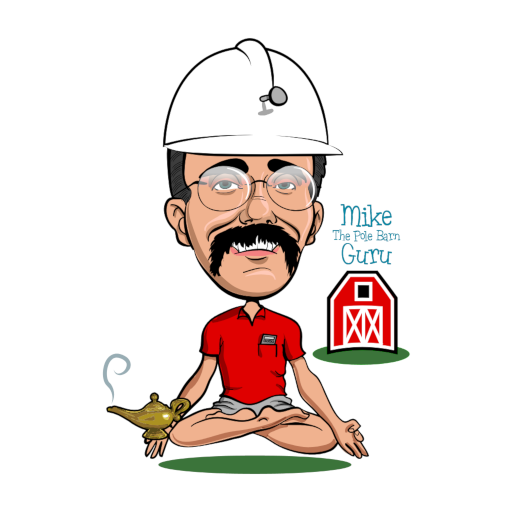Ten years ago when we first started our internet based business, we set up an ACH option for customers to make payments on their pole building kits. I can still remember the first gal we offered payment by ACH to. From memory in talking to her son, the elderly lady who was actually paying for the building (for her son) was an 86 year old spirited gal who probably didn’t ever own a credit card, much less have a clue as to what ACH payment meant. I tried to explain it to her in simple terms, but she was having none of what I was offering! Even at that time we offered 5% off for payment by ACH. The more I tried to explain how easy and “safe” it was, the more upset she became, until I quickly backtracked and suggested she pay by “check by mail” for the same discount.
Today we don’t get nearly as many folks not understanding what ACH is, other than perhaps the terminology. So, what does it mean? ACH stands for “Automated Clearing House”. OK, so how does it work and how is it “safer” than a paper check?
 First of all, when you send a check in the mail, the envelope can get lost, stolen or somehow the check misplaced. It also can take several days for the check to arrive, and another 4 to 5 days for the check to be processed. You don’t have to look very far these days to learn of people who have had their identity “stolen”, or checking accounts hacked into. In fact, a few years back, one of my stepsons had this very same thing happen and suddenly his almost $1000 bank balance came through as almost zero! It was quite a nightmare to get it all back. There are still plenty of places who don’t check ID’s (shame on them!) for every check they process, and some will even accept a two party check. People seem to understand not sending cash in the mail, but sending a check has your bank account number on it, the routing number and the check owner’s personal signature, not to mention your home address and often your telephone number. Everything a good “con” needs to take the money…and run.
First of all, when you send a check in the mail, the envelope can get lost, stolen or somehow the check misplaced. It also can take several days for the check to arrive, and another 4 to 5 days for the check to be processed. You don’t have to look very far these days to learn of people who have had their identity “stolen”, or checking accounts hacked into. In fact, a few years back, one of my stepsons had this very same thing happen and suddenly his almost $1000 bank balance came through as almost zero! It was quite a nightmare to get it all back. There are still plenty of places who don’t check ID’s (shame on them!) for every check they process, and some will even accept a two party check. People seem to understand not sending cash in the mail, but sending a check has your bank account number on it, the routing number and the check owner’s personal signature, not to mention your home address and often your telephone number. Everything a good “con” needs to take the money…and run.
So how about an ACH? This is a Federally regulated procedure. According to Wikipedia: “Rules and regulations that govern the ACH network are established by NACHA (formerly the National Automated Clearing House Association) and the Federal Reserve. In 2002, this network processed an estimated 8.05 billion ACH transactions with a total value of $21.7 trillion.” Companies increasingly encourage folks to use ACH instead of Debit or Credit cards because there are no “fees” associated with these transfers. In other words, if you use a credit card, it costs our business a fee paid to the credit card company to process your payment. But if you use ACH, no fees. So, if you think about it – it’s like a free “wire transfer”. Money goes from your account into the account of who you want to pay. It’s much faster and safer than a paper check. Or at least this is how it’s worked for us over the past ten years, and we’ve processed a ton of ACH payments. About the only folks we get paper checks from anymore are…guess? That’s right…government agencies! Kind of strange if you think about it.
Whoa! You say. You want me to authorize you just TAKING the money out of my checking account?! Sounds scary? Not really. In order to participate, the vendor (in our case, Hansen Buildings) has to jump through quite a few “hoops” in order to be able to do this – have money transferred from your account to ours. Not just “anyone” can become ACH certified! And once we wade through all of the paperwork, they check us out. Thoroughly. And then give us all kind of scary warnings if we don’t follow the procedure to a T. For those who are still worried, I have to say, “Think about it. If any company purposely tried to take more money than an individual authorized the company to ACH out of their account, how long do you think they’d be in business?” This is the Federal Government watching your account for ACH transfers!
So – ACH your payments – save your checks and a stamp. You may even save yourself 5% off!






